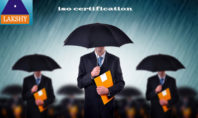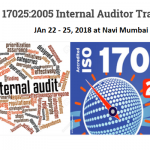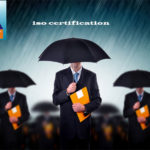Mandatory documentation for ISO 22000 Food safety management system
1) Food Safety Policy
2) Food Safety Objectives
3) Identification and Control of Outsourced Processes
4) Document control
5) Record control
6) Documents that specify how prerequisite programme activities are managed
7) Information required to conduct the hazard analysis
8) Descriptions of raw materials to the extent needed to conduct the hazard analysis
9) Descriptions of Ingredients to the extent needed to conduct the hazard analysis
10) Descriptions of product-contact materials to the extent needed to conduct the hazard analysis
11) The characteristics of end products
12) Descriptions of the intended use to the extent needed to conduct the hazard analysis
13) Descriptions of the reasonably expected handling of the end product to the extent needed to conduct the hazard analysis
14) Descriptions of any possible unintended but reasonably expected mishandling and misuse of the end product to the extent needed to conduct the hazard analysis
15) Descriptions of the methodology and parameters used for the categorization of control measures as belonging to the HACCP plan or Operational prerequisite programmes
16) The food safety hazard or hazards to be controlled by each operational prerequisite programme
17) The food safety hazard or hazards to be controlled by each operational prerequisite programme
18) The control measures used by each operational prerequisite programme
19) The monitoring procedures used in each operational prerequisite programme
20) The corrections and corrective actions for each operational prerequisite programme
21) The responsibilities and authorities for each operational prerequisite programme
22) Records for each operational prerequisite programme
23) The HACCP plan and identified critical control points (CCPs)
24) The food safety hazards to be controlled at each critical control point
25) The control measures used at each critical control point
26) The monitoring procedures used at each critical control point
27) The critical limits applied at each critical control point
28) The rationale for the chosen critical limits
29) The corrections and corrective action to be taken if critical limits are exceeded for each critical control point
30) The responsibilities and authorities for each aspect of the critical control point
31) Critical control point monitoring records
32) Procedures for the handling of potentially unsafe products, including the controls, methods and authorization levels.
33) Procedures for withdrawing products including notification to relevant interested parties, handling of withdrawn products as well as affected products in stock and the sequence of actions to be taken.
34) Procedure for Corrections including the identification and assessment of affected end products
35) Records of the review of corrections carried out
36) Procedure for Corrective Action that specifies the appropriate actions to identify and eliminate the cause of detected nonconformities, to prevent recurrence, and to bring the process or system back into control after nonconformity is encountered.
37) The corrective action procedure must include a review of non-conformances including customer complaints
38) The corrective action procedure must include a review of trends in monitoring results that may indicate development towards loss of control
39) The corrective action procedure must include a review to determine the causes of non-conformances
40) The corrective action procedure must include an evaluation of the need for action to ensure that nonconformities do not recur
41) The corrective action procedure must include a how the actions needed are determined
42) The corrective action procedure must include a how the actions needed are implemented
43) Records of corrective actions
44) Records of the review of corrective actions taken to ensure that they are effective
45) Procedure for Internal Auditing including responsibilities and requirements for planning and conducting audits, for reporting results and maintaining records.
46) Internal Audit records
47) External documents relevant for the food safety activities including statutory, regulatory and customer requirements.
The extent of the documentation will differ from one organization to another depending on the size and complexity of the operation and the competence of personnel.










